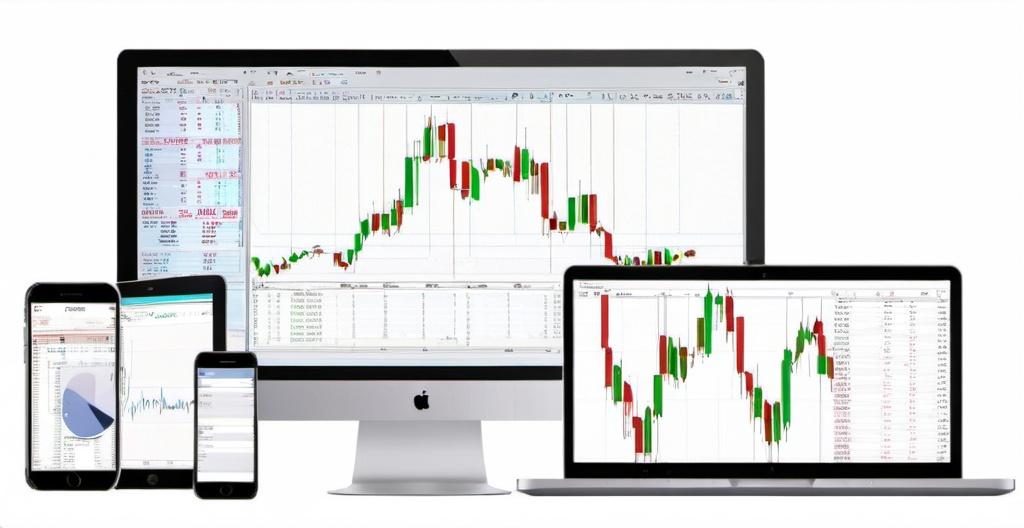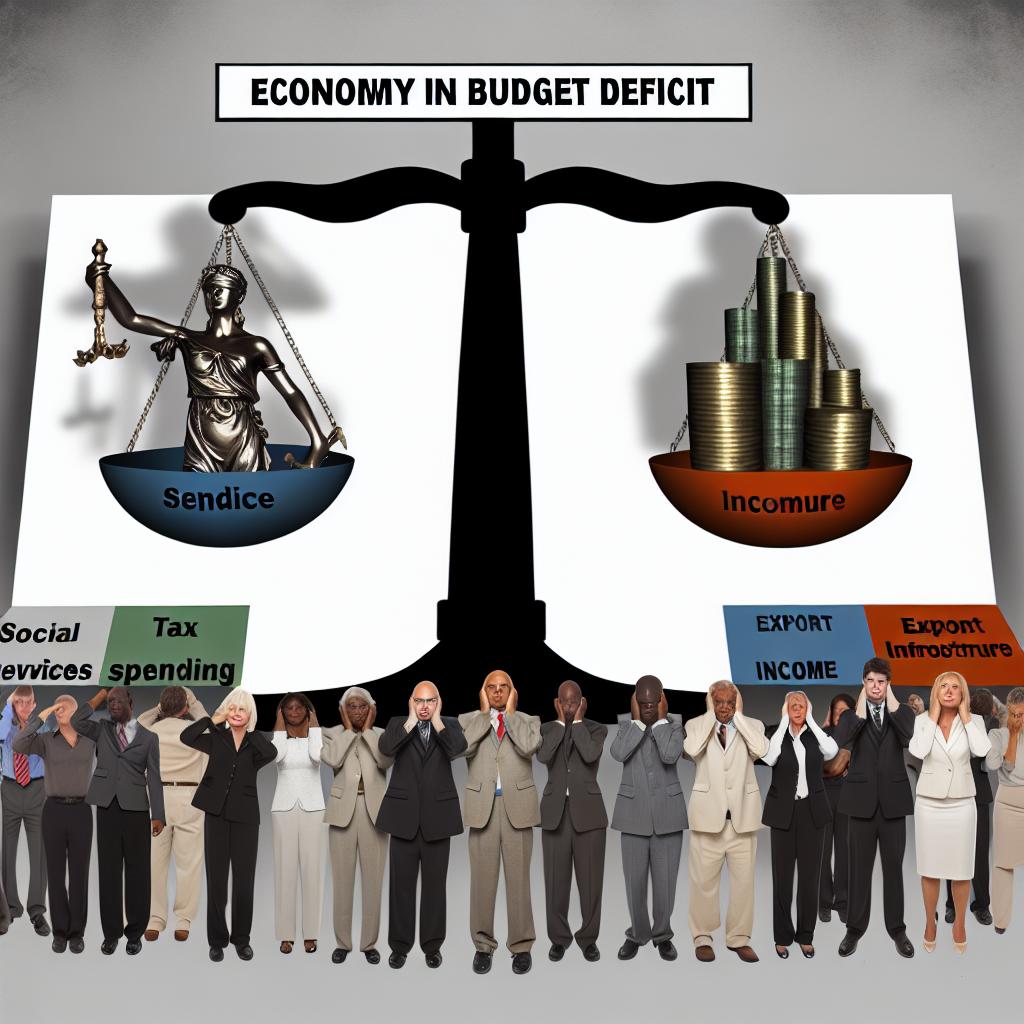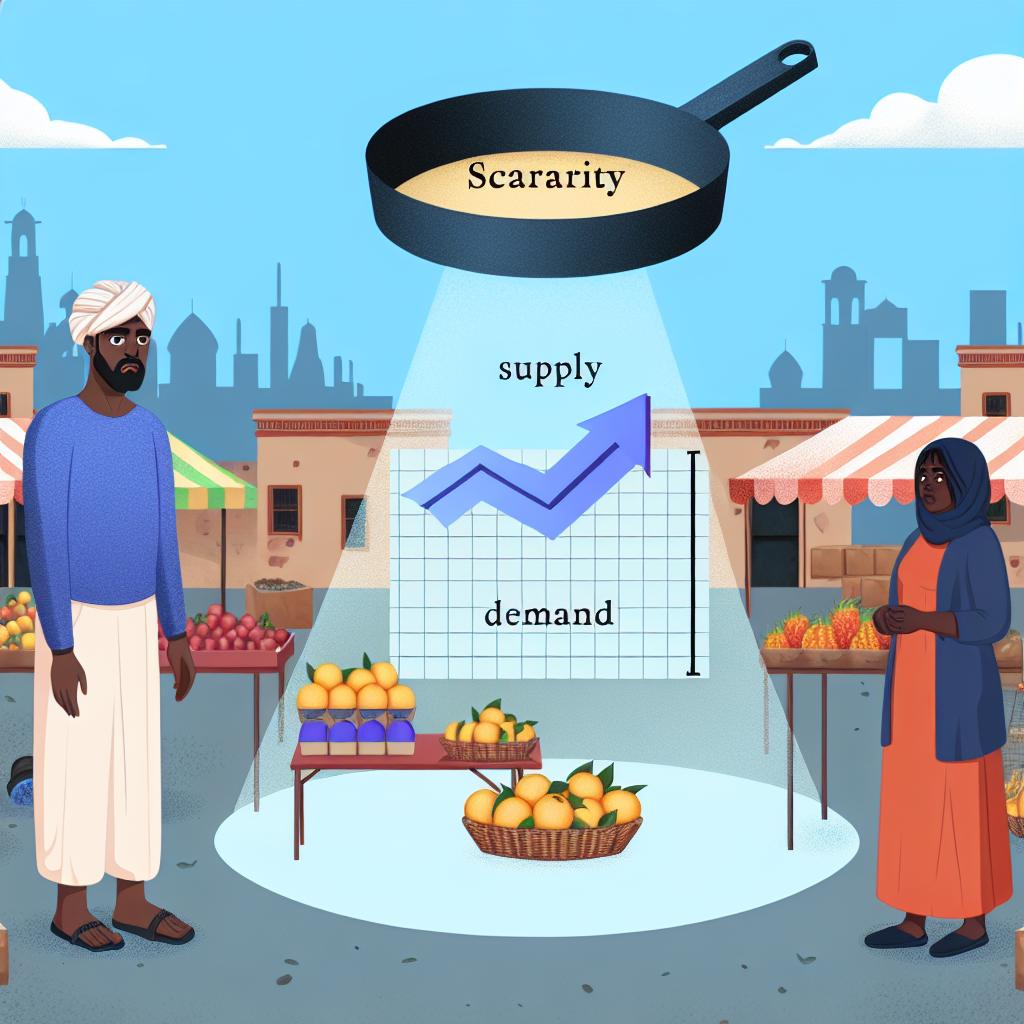Archives: Forex Trading in Kenya
Forex trading has been steadily gaining traction in Kenya over the past decade. With more accessible internet connections, mobile payment systems like M-Pesa, and an increasing number of licensed brokers, retail traders now have direct access to the global currency markets. What was once seen as a niche activity has become a mainstream way for Kenyans to try their hand at active trading.

Regulation and Safety
The Capital Markets Authority (CMA) regulates forex trading in Kenya. This step was crucial, as it reduced the risks associated with unregulated offshore brokers that often targeted retail traders. A CMA license means brokers must follow strict guidelines on transparency, client fund security, and reporting. While many traders still use international brokers, locally regulated firms are seen as safer since disputes can be handled under Kenyan law.
Access and Technology
One of the biggest drivers of forex trading growth in Kenya is mobile accessibility. Many brokers integrate seamlessly with M-Pesa, making deposits and withdrawals fast compared to traditional banking channels. Platforms like MetaTrader 4 and MetaTrader 5 are common, offering charting, technical indicators, and automated trading options. The rise of smartphone trading apps has made it possible for traders to manage positions from anywhere, which fits the Kenyan market’s mobile-first culture.
Risks and Considerations
While forex trading offers opportunities, it also comes with significant risks. Leverage, often marketed as a selling point, magnifies both profits and losses. Many beginners underestimate how quickly an account can be wiped out by poor risk management. Education is another gap—too many traders jump in chasing fast money without learning about position sizing, stop losses, or strategy testing.
Why Education Matters
Traders who invest time into learning the basics—market structure, technical analysis, risk management—tend to last longer in the market. Kenyan universities and training institutions are beginning to offer short courses, but much of the education still comes from online resources and communities.
Where to Learn More
For those looking to understand the forex trading scene in Kenya, the website forex.ke provides updated insights on brokers, regulations, and trading practices that apply directly to the Kenyan market.
Final Thoughts
Forex trading in Kenya is no longer a fringe activity—it’s becoming mainstream, especially among younger traders comfortable with mobile technology. The opportunities are real, but so are the risks. With regulation improving and access easier than ever, the traders who succeed will be those who treat forex not as a quick gamble but as a skill worth developing.
Archives: What is a Free Market Economy and How Does It Work?

Understanding a Free Market Economy
A free market economy is an economic system where the prices of goods and services are determined by the forces of supply and demand within an open market. In this environment, the interacting forces of supply and demand are uninfluenced by any governmental or monopolistic interference. This economic model is rooted in the belief that competition fosters efficient resource production and allocation, ultimately benefiting consumers and spurring innovation.
Key Features of a Free Market Economy
A free market economy is characterized by certain distinct features that differentiate it from other economic models:
1. Voluntary Exchange: One of the fundamental aspects of a free market economy is the freedom for individuals and businesses to engage in voluntary trade. In such a marketplace, buyers and sellers can negotiate terms that are mutually beneficial, without any external pressure or coercion. This mechanism helps in the efficient distribution of goods and services, as well as in determining fair prices.
2. Competition: The lack of government interference leads to a competitive business environment. This competition is crucial as it pushes businesses to improve the quality of their goods and services, diversify their offerings, and enhance efficiency. As companies vie for consumers’ attention, the market naturally weeds out less efficient players, leading to a dynamic and self-regulating economic system.
3. Private Property: An essential component of a free market economy is the concept of private property. Individuals have ownership and control over resources and assets, which incentivizes them to innovate and enhance their offerings to maintain a competitive edge. Private ownership also promotes accountability, as individuals are responsible for their property and its productive use.
4. Profit Motive: The driving force behind many activities in a free market economy is the pursuit of profit. This motivation encourages entrepreneurs and companies to take calculated risks and adopt innovative practices, propelling economic growth and development. The quest for profit leads to advancements in technology and processes, fueling a cycle of innovation and efficiency.
The Role of Government in a Free Market Economy
While the principle of minimal government interference is a cornerstone of a free market economy, the government still has significant responsibilities in ensuring its smooth operation. Primarily, governments maintain law and order, protecting property rights and enforcing contracts to create a stable economic environment. This legal framework ensures that businesses can operate efficiently and that consumers have trust in the market’s fairness.
On occasion, governments might intervene to address significant market failures. For example, monopolies can hamper competition, and excessive pollution can harm public welfare. In such cases, governments may implement regulations to correct these imbalances, ensuring that the market remains competitive and sustainable. These interventions are typically designed to preserve the integrity of the market and protect consumers from potential harms.
Advantages of a Free Market Economy
The free market economy offers a range of advantages to both consumers and businesses:
Efficiency: By allowing market forces to set prices, resources are allocated to their most productive uses, minimizing waste and enhancing production efficiency.
Innovation: The drive to outperform competitors leads businesses to invest in new technologies and processes, resulting in a steady stream of innovative products and services.
Consumer Choice: With numerous businesses competing for consumers’ attention, there is a wide array of products and services available, catering to diverse needs and preferences.
Economic Growth: The profit-seeking motive encourages businesses to expand their operations, translating into increased economic activity and job creation.
Challenges of a Free Market Economy
Despite its benefits, a free market economy is not without its challenges:
– Income Inequality: In the absence of regulatory frameworks, disparities in wealth and income can emerge, leading to social inequities and potential unrest.
– Market Failures: Situations can arise where market forces alone fail to achieve optimal outcomes, such as environmental degradation or monopolistic practices. In these instances, government intervention may be required to restore balance.
– Economic Fluctuations: Free markets are susceptible to cycles of boom and bust, which can result in economic instability and uncertainty for businesses and consumers.
The ongoing debate among economists and policymakers revolves around the merits and drawbacks of a free market economy. While the advantages are substantial, striking the right balance between economic freedom and necessary regulation is critical to maximizing potential benefits while minimizing negative impacts. This balance ensures that the economy continues to function efficiently, with the welfare of society as a primary consideration. Through careful consideration and informed policymaking, the free market economy can evolve to meet the needs of an ever-changing world.
Archives: Understanding Debt-to-GDP Ratio and Its Importance

Understanding Debt-to-GDP Ratio
In today’s global economy, the debt-to-GDP ratio stands as a pivotal measure widely employed to assess the fiscal health of a country. This ratio functions as a comparative tool juxtaposing a nation’s public debt with its gross domestic product (GDP), thereby serving as a barometer for the country’s capability to manage and repay its debts. Grasping the intricacies of this ratio enables analysts and stakeholders to better understand the financial stability and economic well-being of nations across the globe.
Calculating the Debt-to-GDP Ratio
The calculation method of the debt-to-GDP ratio is relatively simple, yet it offers profound insights into a country’s financial health. Expressed as a percentage, the debt-to-GDP ratio is derived by dividing the total public debt of a country by its GDP. The formula used is as follows:
Debt-to-GDP Ratio (%) = (Total Public Debt / GDP) × 100
This straightforward equation serves the purpose of quantifying the proportion of a country’s economic output that is necessary to service its public debt. By employing this calculation, governments, economists, and financial analysts can develop a clearer picture of a nation’s fiscal standing.
Significance of the Debt-to-GDP Ratio
The debt-to-GDP ratio holds significant importance as it offers a glimpse into a country’s financial durability. A high debt-to-GDP ratio might suggest that a country could encounter difficulties in settling its debts without incurring additional debt. This scenario can trigger concerns regarding the country’s fiscal management and lead to further implications, such as downgrades in credit rating. On the other hand, a low debt-to-GDP ratio typically reflects a scenario where a nation is generating adequate economic output to efficiently manage its debt obligations. However, it’s crucial to recognize that there isn’t a universally agreed-upon “ideal” debt-to-GDP ratio, as this metric can fluctuate depending on a nation’s unique economic structure and growth prospects.
Implications for Economic Stability
For investors, policymakers, and international financial organizations, the debt-to-GDP ratio acts as a vital indicator of a country’s economic stability. A climbing ratio could signal heightened risks of default, potentially leading to increased borrowing costs for the country. This, in turn, could dampen investor confidence and heighten economic uncertainty. Therefore, fostering sustainable economic growth, maintaining fiscal discipline, and ensuring prudent government spending are essential elements in driving a stable and sustainable debt-to-GDP ratio.
International Comparisons
In the realm of international finance and economics, cross-country comparisons of debt-to-GDP ratios can provide valuable insights, yet they require careful consideration of the distinct economic contexts and characteristics inherent to each nation. For example, developed countries like Japan are sometimes capable of maintaining higher debt-to-GDP ratios without immediate financial distress due to their mature economies and robust internal financing mechanisms. In contrast, emerging economies may find even moderately high debt-to-GDP ratios to be more burdensome, given their smaller economic scale and possibly limited access to financial markets.
When evaluating the debt-to-GDP ratios of different countries, it’s essential to factor in variables such as economic size, growth trends, and historical precedence. Ignoring these considerations can lead to misinterpretations and over-generalizations about countries’ fiscal positions.
Conclusion
The debt-to-GDP ratio offers a critical lens through which to evaluate a nation’s economic health and the efficacy of its fiscal policies. While this measure provides valuable insights into a country’s ability to manage its debts, it is essential to view it in conjunction with other economic indicators for a complete and nuanced analysis. For those seeking additional information on fiscal metrics and the holistic understanding of national economies, reliable financial data sources such as the International Monetary Fund and the World Bank serve as valuable references.
In summary, the debt-to-GDP ratio is a vital metric that contributes to our understanding of a country’s fiscal health and economic performance. Its use, however, must be informed by a broader understanding of various economic factors and contextual knowledge. As the global economy continues to integrate and evolve, maintaining a keen awareness of such metrics will be crucial for stakeholders worldwide.
Archives: What is a Budget Deficit and How Does It Affect the Economy?

Understanding Budget Deficit
A budget deficit takes place when a government’s expenses surpass its revenue over a particular period. This phenomenon is relatively common among nations where spending priorities require more funding than the income generated. Governments generally finance these deficits by borrowing money, often through the issuance of bonds. Gaining a clear understanding of the impacts and implications of a budget deficit is essential for comprehending the broader scope of economic dynamics.
Causes of Budget Deficits
Several factors can contribute to the occurrence of a budget deficit. These factors range from increased government spending on essential programs to inefficiencies within the tax system. Below are some of the primary causes:
One of the most significant causes is increased government spending on key programs like healthcare, education, and defense. When these expenditures rise, often due to policy decisions prioritizing social welfare, the financial requirement may exceed available funds.
Another critical cause is a decrease in revenue from taxes. This can occur during economic downturns when businesses and individuals earn less, translating to lower tax collections. Tax cuts designed to stimulate economic growth may also reduce revenues if they are not offset by increased economic activity. Additionally, inefficient tax systems that fail to capture potential revenue can exacerbate this issue.
Occasionally, governments face unexpected financial crises necessitating emergency spending. Such emergencies can strain financial resources, leading governments to spend beyond their regular budget allocations.
Short-term Effects on the Economy
Despite the potential downsides, budget deficits can have certain short-term benefits for the economy, particularly in stimulating economic growth. When a government increases its spending, it injects additional liquidity into the economy.
Stimulating Economic Growth: By spending more than it collects, the government can invigorate money flow within the economy. When government funds are directed toward projects or services, they often lead to increased consumption of goods and services. This uptick in demand can push businesses to hire more workers and ramp up production, creating a ripple effect of economic activity.
The Keynesian economic theory suggests that during periods of economic recession, purposeful government deficits can help revitalize lukewarm economies. The increased expenditure from the government can induce consumer spending flows, stabilize the market, and reduce unemployment rates.
Long-term Consequences
Although budget deficits might act as a catalyst for short-term economic rejuvenation, their persistence can bring about negative long-term consequences. The implications of sustained deficits need careful management to mitigate potential risks.
Rising National Debt: The continuous funding of budget deficits through borrowing invariably increases a country’s national debt. As the debt accumulates, so does the interest obligation that must be repaid. Eventually, interest payments may consume a significant portion of government expenditures, reducing the available budget for other programs.
Additionally, there is a potential for inflation. As governments continue to borrow and introduce more money into circulation, there is a risk of inflation. Any scenario where there is an abundance of money chasing a limited supply of goods can result in an inflationary environment, diminishing the value of currency and causing price hikes.
Higher Interest Rates: Sustained borrowing can lead to increased interest rates as governments compete with the private sector for financial resources. This competition can make borrowing costlier for businesses and individuals, which might adversely impact private investment. A decline in investment can slow economic growth, creating a more challenging environment for long-term fiscal health.
Managing a Budget Deficit
Managing a budget deficit effectively demands a delicate balance between addressing immediate needs and preserving long-term fiscal health. Some common strategies to tackle these challenges involve a mix of increasing revenue and curbing unnecessary spending.
Tax reforms play a crucial role in boosting government revenue. By ensuring that the tax regime is efficient, equitable, and incentivizes productivity, governments can collect adequate revenue without hindering economic growth.
In parallel, exercising discretion in spending cuts or finding ways to improve efficiency in government programs can reduce unnecessary expenditures. Governments need to identify less critical areas where spending can be optimized or reduced without compromising essential services.
Lastly, implementing prudent monetary policies helps keep inflation in check, stabilizing the economy. Monetary policy can complement fiscal strategies by controlling money supply and interest rates, thus ensuring a balanced approach to economic management.
For individuals and professionals keen on exploring further, numerous government finance agencies and economic research institutions provide insights and analysis on national fiscal policies. Engaging with these resources deepens understanding of the intricate dynamics involved in managing budget deficits and navigating the challenges they present.
In essence, while budget deficits can provide short-term economic stimulation, they also require careful management to avoid long-term fiscal instability. By strategically addressing both revenue and expenditure sides, governments can attempt to ensure sustainable economic growth and fiscal health.
Archives: The Concept of Scarcity in Economics

Understanding the Concept of Scarcity in Economics
In economics, the concept of scarcity is a principle of paramount importance. This principle is rooted in the very fabric of economic study and discourse, accentuating the inherent limitations present when it comes to fulfilling human needs and wants. At the very core of economic theory is this basic economic problem, which arises due to the stark reality that while resources are finite, human desires for goods and services are boundless and constantly evolving. Such a state of affairs demands that choices and trade-offs become essential in the quest to allocate resources most effectively.
Defining Scarcity
The notion of scarcity, when viewed through an economic lens, refers to the limited nature of resources in comparison to the seemingly unlimited wants of individuals and societies. Resources that hold economic value—land, labor, capital, and entrepreneurship—come with a finite supply. These resources lack the capacity to meet all the desires and needs of a growing population. Consequently, economic agents—whether they are individuals, corporations, or governmental bodies—find themselves in the pivotal position of needing to make crucial decisions about how best to utilize these constrained resources.
The Implications of Scarcity
The far-reaching implications of scarcity permeate multiple facets of economic activity in profound ways:
Choice and Opportunity Cost: The scarcity of resources necessitates that individuals and organizations embark upon decision-making processes to ensure the efficient allocation of resources. This dynamic brings forth the concept of opportunity cost, which denotes the value of the second-best alternative that is foregone when a particular choice is made. To elucidate, consider a scenario where a decision is made to produce an increased quantity of consumer goods; this decision might result in fewer resources being directed towards the production of capital goods, highlighting the trade-offs inherent in economic decision-making.
Resource Allocation: The reality of scarcity gives rise to the need for a mechanism capable of allocating resources in a manner that optimizes both output and efficiency. Within the framework of a market economy, prices frequently assume this critical role, serving as indicators to highlight where resources are most valued and needed.
Economic Systems and Scarcity: Different economic systems—each embodying unique philosophies and approaches—tackle the issue of scarcity through diverse means. The varying degrees to which market forces and governmental intervention are utilized within capitalism, socialism, or mixed economies elucidate the distinct methods for coping with resource allocation.
The Role of Supply and Demand
Supply and demand forces are integral components in the conversation surrounding scarcity. In market dynamics, these forces actively respond to scarce resources through the mechanism of price adjustments. For instance, the price of a particular good or service may increase if it experiences a heightened level of scarcity. This price increase acts as a signal to both consumers and producers, aligning demand with the limited supply available. It is this self-regulating mechanism that directs resources toward their most valued and essential uses within a market economy.
Addressing Scarcity
Efforts to address and effectively manage the challenges posed by scarcity require innovative strategies geared towards increased efficiency and resource exploration. Technology, with its ever-advancing front, provides numerous pathways to enhance production methods and create new alternatives. Scientific innovation often leads to the discovery of alternative resources, thus broadening the range of available options. Moreover, education that emphasizes resource management plays a pivotal role in enabling societies to make informed and prudent decisions. One of the primary goals is to strive toward sustainable development, ensuring that resources are utilized in a manner that benefits both present and future generations.
Conclusion
The concept of scarcity resides at the core of economic thought, serving as the motivational force behind a multitude of economic theories and practices. A firm grasp of scarcity aids in understanding the motives and rationale behind specific economic activities, and it assists in formulating strategies focused on more efficient resource utilization. Both individuals and societies are tasked with navigating the intrinsic limitations posed by scarcity by making informed, strategic decisions. This imperative often necessitates further exploration beyond surface-level understanding. To fully appreciate the complexities of scarcity and its multifaceted impact on economics, readers are encouraged to delve deeper into additional resources or to explore dedicated economic education websites.
Categories
- Uncategorized
 (31)
(31)

